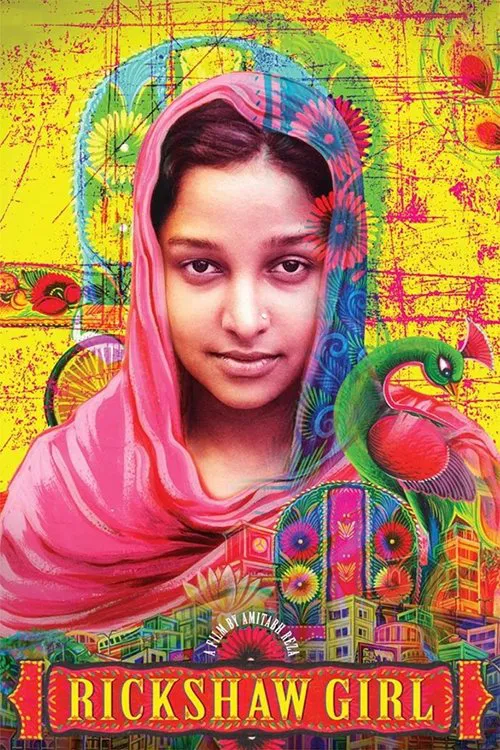Rickshaw Girl

Plot
Rickshaw Girl is a heartwarming and inspiring story based on the novel by Mitali Perkins. The film follows the life of fourteen-year-old Naima, a bright and talented girl from a poverty-stricken family in a small Bangladeshi village. Naima's father, Rupban, has worked tirelessly to maintain a living for his family, relying heavily on the income generated from plying his old, rickety bicycle rickshaw. Unfortunately, his struggles have taken a toll on the entire family, particularly Naima, who has grown increasingly restless in her desire to contribute to the household income. With the economic situation growing dire, Rupban is faced with the daunting task of paying off substantial debts to the local loan sharks, who have been breathing down his neck for months. One day, upon Rupban's sudden illness, the family finds themselves at a crisis point, with the loan sharks threatening to seize the rickshaw, their most valuable asset. It is during this critical moment that Naima takes it upon herself to devise a plan to save the family's livelihood. Undeterred by the societal norms that dictate women should confine themselves to domestic roles, Naima conceives a bold and ambitious plan to disguise herself as a boy and take over his father's duties as a rickshaw driver. Donning a makeshift boy's tunic and a determined look, Naima sets out to navigate the unfamiliar terrain of male-dominated transportation. Initially, she faces ridicule, harassment, and outright hostility from the male passengers and fellow drivers, who are taken aback by her awkward attempts to mimic the behavior of a rickshaw driver. As Naima grapples with the various obstacles that come her way, she begins to realize the depth of her frustration and sense of inadequacy – the inability to make a meaningful contribution to the family's income despite her exceptional artistic talent, which has been largely ignored in favor of her practical skills. As Naima navigates the treacherous roads and congested streets of the village, she begins to develop a sense of independence and resourcefulness. Her interactions with her fellow villagers are replete with humor and a healthy dose of sarcasm, allowing her to deflect the various criticisms and taunts that she endures. At the same time, Naima's journey reveals a sense of desperation and resourcefulness that defines the struggles faced by so many women and girls around the world. Naima's bold plan soon hits an inevitable roadblock, as she crashes the rickshaw into a nearby pond during a particularly chaotic trip. This mishap not only imperils her ability to earn the much-needed income but also risks destroying the family's livelihood. In a desperate bid to save both the rickshaw and the family's economic status, Naima turns to a group of street vendors who have developed a reputation for their ability to repair and repurpose broken rickshaws. The outcome of this initiative is uncertain, and Naima's future hangs precariously in the balance. Throughout the course of the film, the narrative deftly explores the multifaceted and complex dynamics of Naima's relationship with her family members. Her younger brother, who idolizes her and looks up to her with a mixture of awe and admiration, serves as a counterpoint to the difficulties faced by Naima as a teenage girl in a society where women's roles are strictly defined. Her brother's innocence and playfulness offer a poignant reminder of the beauty and value of childhood, and the importance of nurturing and protecting this fragile and formative stage of life. Ultimately, Rickshaw Girl is a story of resilience, hope, and empowerment. Naima's unyielding determination and unwavering commitment to her family's survival serve as a powerful reminder that even in the face of adversity, one person can make a significant difference. This poignant and uplifting film is an inspiring tribute to the strength of women and girls, and a testament to the enduring power of the human spirit.
Reviews
Recommendations




